Hello, fellow Labrador enthusiasts! Today, we’re tackling an essential topic that every dog owner needs to be aware of: plants that are potentially dangerous to our beloved pets. Many common household and garden plants can pose significant risks to our Labradors, leading to a variety of health issues.
This post will guide you through 11 Dangerous Plants That Could Harm Your Labrador, providing the knowledge you need to keep your furry friend safe.
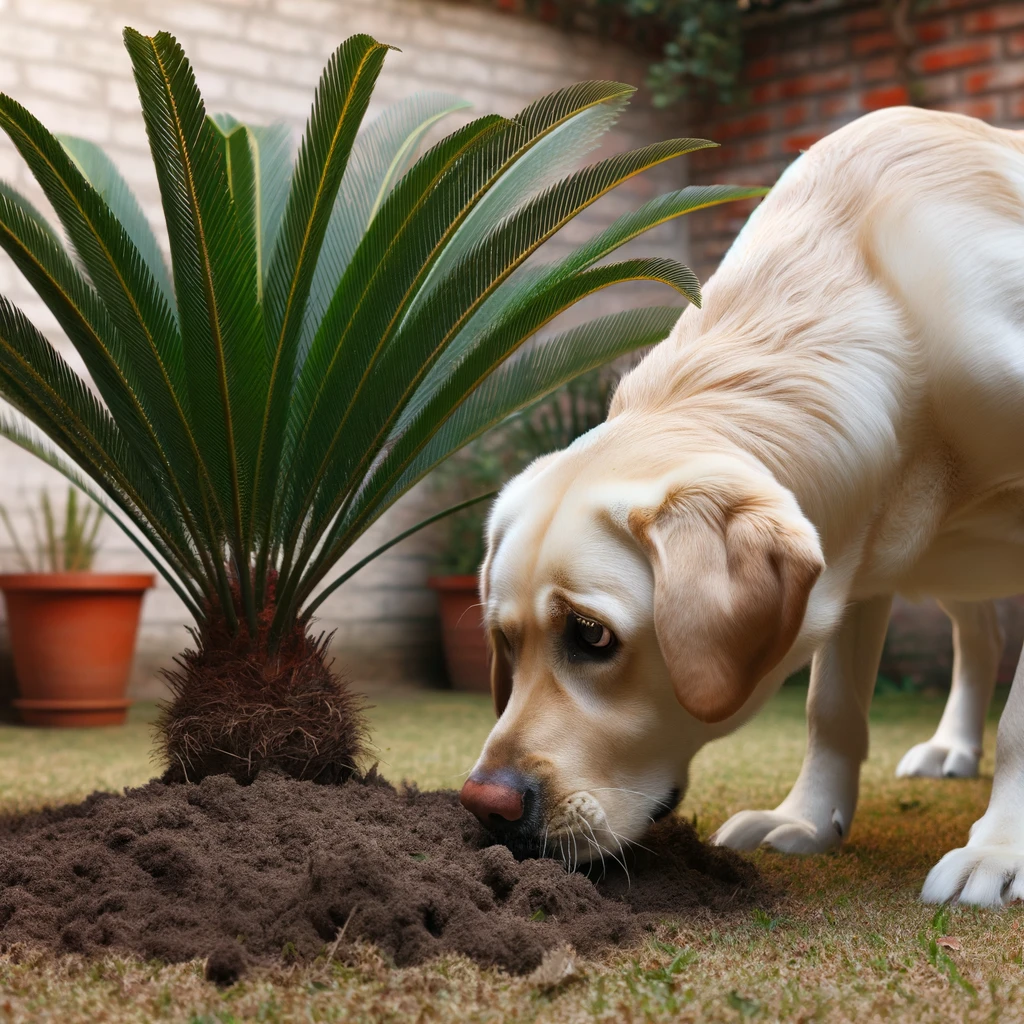
| 🌿 Plant | Why It’s Dangerous | Symptoms to Watch For | Immediate Action |
|---|---|---|---|
| 🌿 Lilies | Toxic, can cause kidney failure. | Lethargy, vomiting. | Immediate veterinary visit. |
| 🍇 Grapes & Raisins | Cause acute kidney failure. | Vomiting, diarrhea, lethargy. | Urgent veterinary care. |
| 🌰 Sago Palm | Entire plant is toxic, seeds most dangerous. | Vomiting, diarrhea, seizures, liver failure. | Seek veterinary care immediately. |
| 🍫 Cocoa Mulch | Contains theobromine like chocolate. | Heart tremors, seizures. | Prevent access, contact vet if ingested. |
| 🌺 Azaleas | Ingesting leaves causes digestive and heart issues. | Vomiting, diarrhea, drooling. | Vet visit needed urgently. |
| 🌲 Yew | Contains compounds affecting heart and CNS. | Trembling, difficulty breathing, heart failure. | Emergency veterinary treatment. |
| 🌾 Foxglove | Contains cardiac glycosides affecting the heart. | Vomiting, diarrhea, heart issues. | Immediate vet intervention. |
| 🌳 Oak Trees | Acorns and leaves contain tannins. | Stomach pain, vomiting, diarrhea. | Keep away and monitor health. |
| 🍒 Cherry Trees | Leaves and pits contain cyanide. | Difficulty breathing, dilated pupils, shock. | Veterinary emergency if ingested. |
| 🍂 Autumn Crocus | Causes severe vomiting, organ damage. | Gastrointestinal bleeding, liver/kidney damage. | Seek vet care immediately, even before symptoms. |
| 🌼 Daffodils | Bulbs are toxic, cause intense vomiting. | Vomiting, diarrhea, abdominal pain. | Consult your vet right away. |
🌿 1. Lilies
Beware of All Lilies
While not all lilies are toxic to dogs, certain types like daylilies can cause severe kidney issues in Labradors. It’s crucial to avoid having these plants in your garden or home if you have pets.
Immediate Symptoms
If your Labrador ingests any part of a lily, they might experience lethargy, vomiting, or kidney failure symptoms. Contact your vet immediately if you suspect your Labrador has eaten any part of a lily.
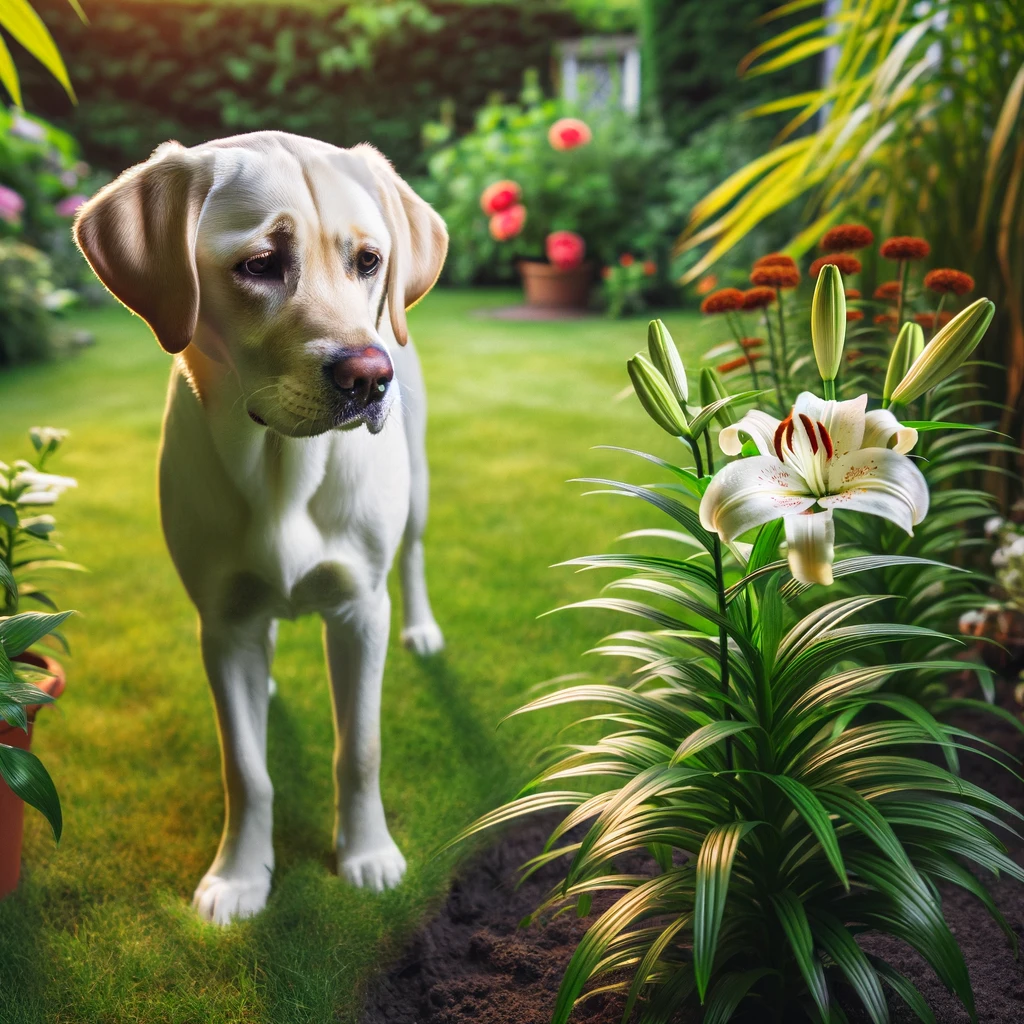
🍇 2. Grapes & Raisins
Highly Toxic
Grapes and their dried counterparts, raisins, are widely known to be extremely toxic to dogs, including Labradors. Even small amounts can lead to acute kidney failure.
Watch for Early Signs
Symptoms of grape or raisin toxicity include vomiting, diarrhea, and lethargy, which can occur within a day of ingestion. This is an emergency requiring immediate veterinary attention.
🌰 3. Sago Palm
Deadly Beauty
Sago palms are attractive but deadly to dogs. All parts of the plant are toxic, with the seeds being the most dangerous.
What to Look For
Ingestion can cause vomiting, diarrhea, seizures, and liver failure. If you think your Labrador has chewed on any part of a sago palm, it’s critical to seek veterinary care immediately.
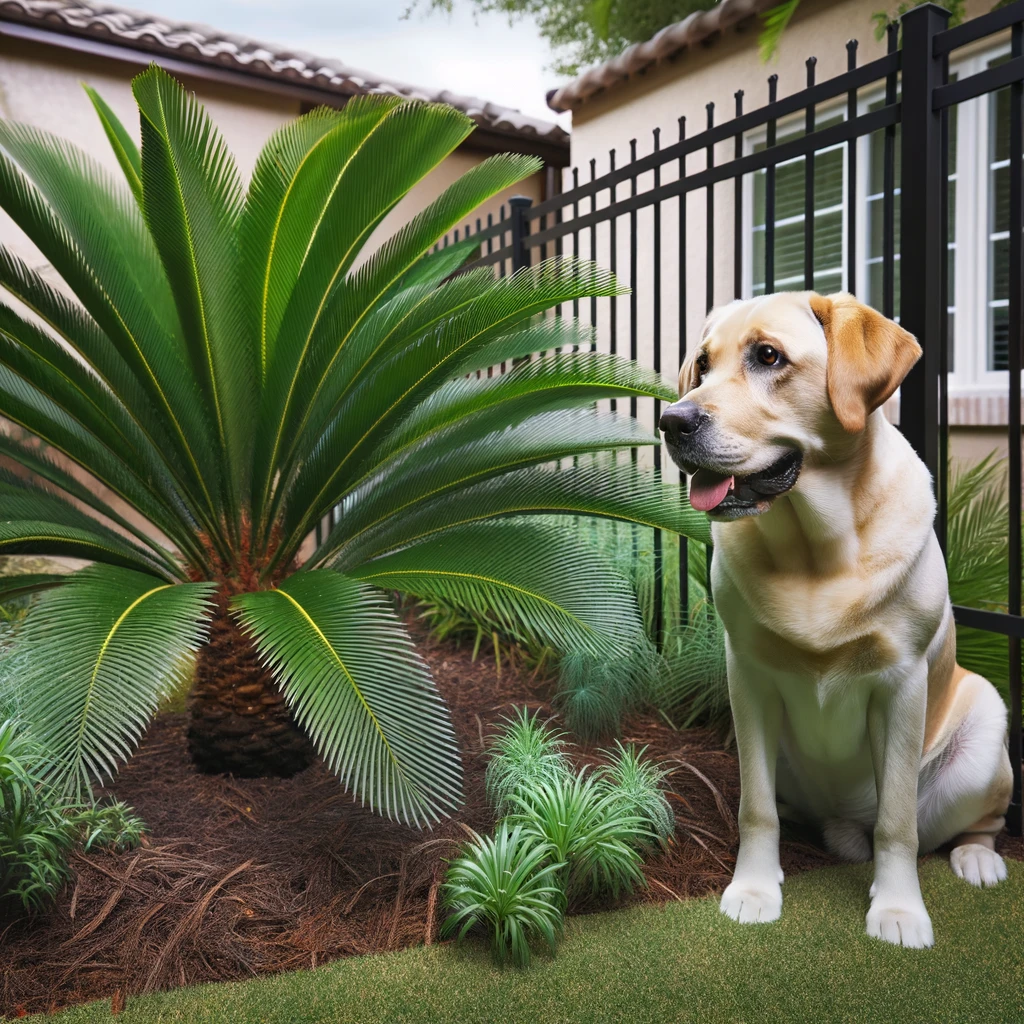
🍫 4. Cocoa Mulch
Chocolate Scented Danger
Cocoa mulch, which is made from cocoa shells, smells like chocolate and can be very attractive to dogs. However, it contains theobromine, the same substance that makes chocolate toxic to dogs.
Symptoms and Prevention
If ingested, cocoa mulch can cause chocolate poisoning symptoms such as heart tremors, seizures, and death. Keep this mulch out of reach or opt for a non-toxic alternative.
🌺 5. Azaleas
Not Just Pretty
Azaleas can brighten up any garden, but they carry a risk for Labradors. Eating even a few leaves can result in vomiting, diarrhea, and drooling.
Serious Risks
Severe azalea poisoning can lead to central nervous system problems and cardiovascular collapse. If your dog consumes azalea, contact your vet immediately.
🌲 6. Yew
A Common Hazard
Yew trees are common in outdoor landscapes yet are highly toxic to both humans and pets. They contain compounds that can cause central nervous system effects and significant cardiac issues.
Clinical Signs
Symptoms include trembling, incoordination, difficulty breathing, and potential heart failure. Yew ingestion is an urgent veterinary emergency.
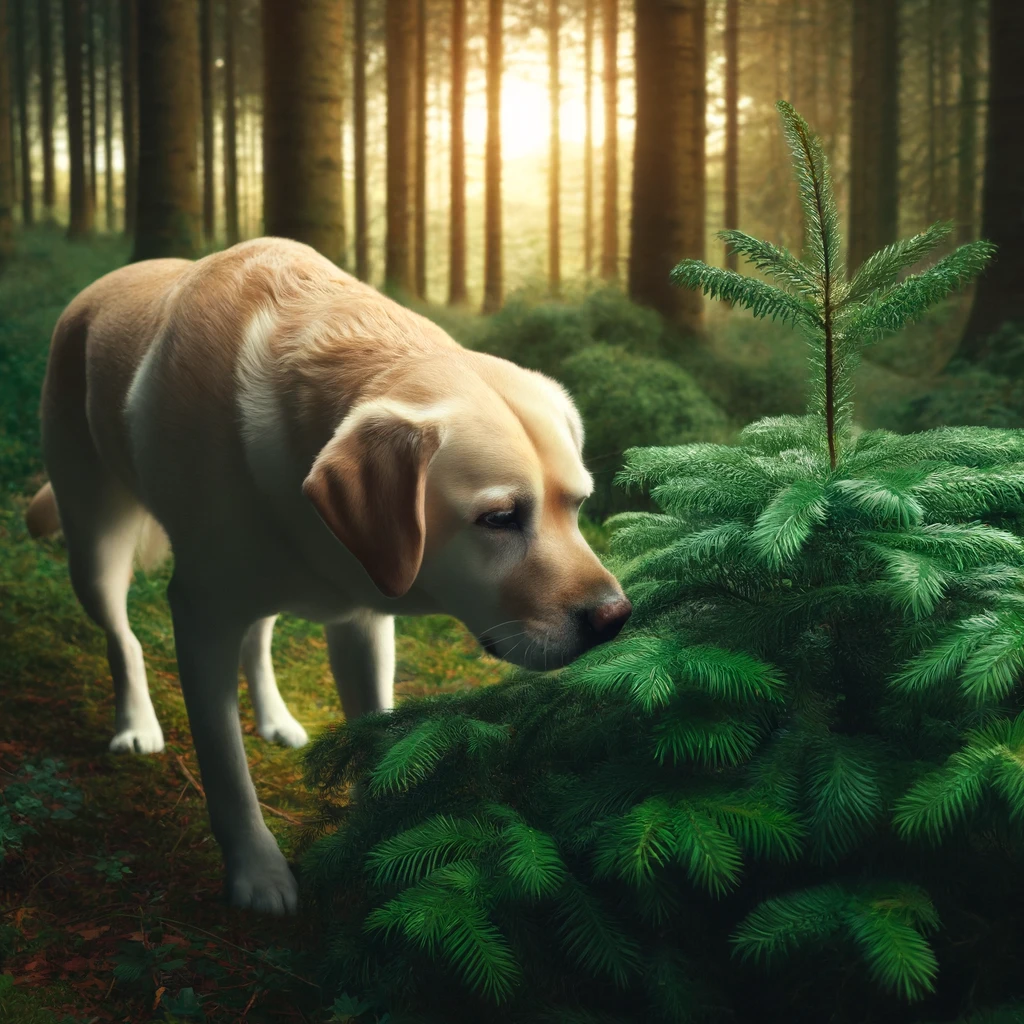
🌾 7. Foxglove
Beautiful But Deadly
Foxgloves are beautiful, tall plants that are highly poisonous to Labradors due to their cardiac glycosides, which affect the heart.
Immediate Concerns
Ingestion can quickly lead to heart failure, and symptoms include vomiting, diarrhea, and cardiac arrhythmias. Immediate veterinary intervention is necessary.
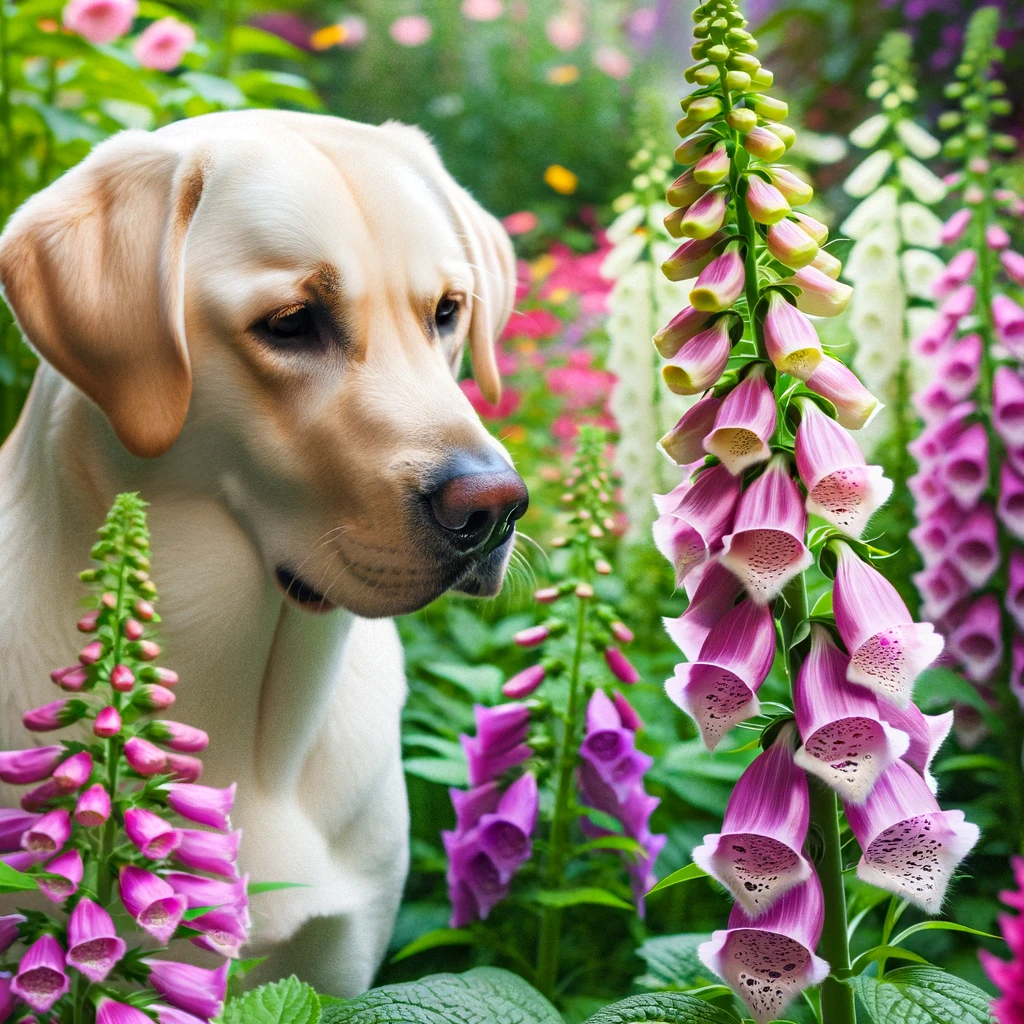
🌳 8. Oak Trees
Acorn Risks
While oak leaves and acorns aren’t typically considered as toxic as other plants, they contain tannins that can cause kidney damage and gastrointestinal distress if consumed in large quantities.
Symptoms to Watch
Look for signs of stomach pain, vomiting, and diarrhea if your Labrador eats acorns or oak leaves. Continuous exposure can lead to more severe health issues, so keeping these items out of reach is wise.
🍒 9. Cherry Trees
Toxic Pits
All parts of cherry trees are toxic except for the ripe fruit. The leaves and pits contain cyanide, particularly dangerous in their wilted form.
Signs of Poisoning
Symptoms of cherry poisoning include dilated pupils, difficulty breathing, and shock. Immediate veterinary care is crucial to manage cyanide poisoning.
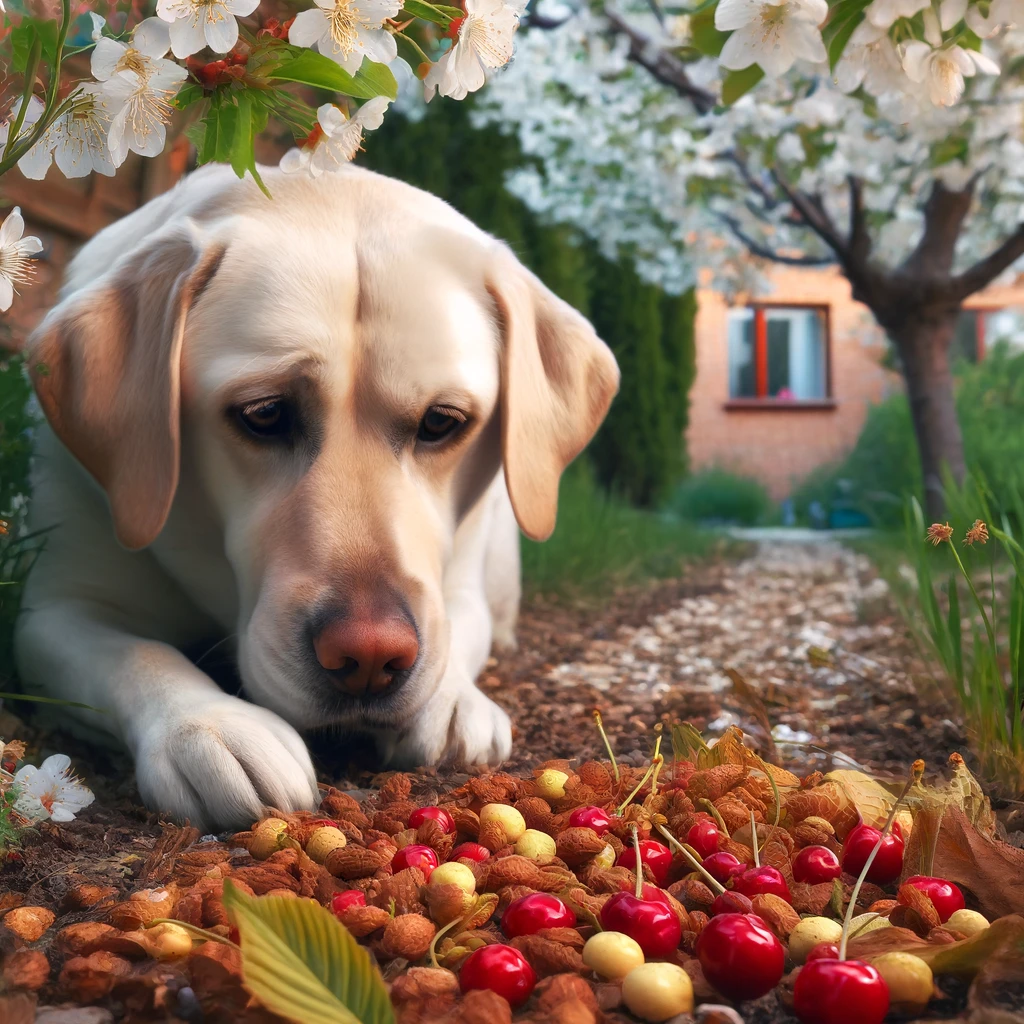
🍂 10. Autumn Crocus
Seasonal Threat
The autumn crocus is highly toxic when ingested, causing severe vomiting, gastrointestinal bleeding, liver and kidney damage, and respiratory failure.
Critical Action
Symptoms may be delayed for several days, so if you suspect ingestion, don’t wait to see signs before seeking help. Early intervention can be lifesaving.

🌼 11. Daffodils
Spring Danger
Daffodils, including the bulbs, are toxic to dogs
. They contain lycorine, an alkaloid with strong emetic properties that cause vomiting.
Immediate Symptoms and Care
Typical signs include intense vomiting, diarrhea, and abdominal pain. If daffodil ingestion occurs, seek veterinary assistance right away to mitigate the effects.
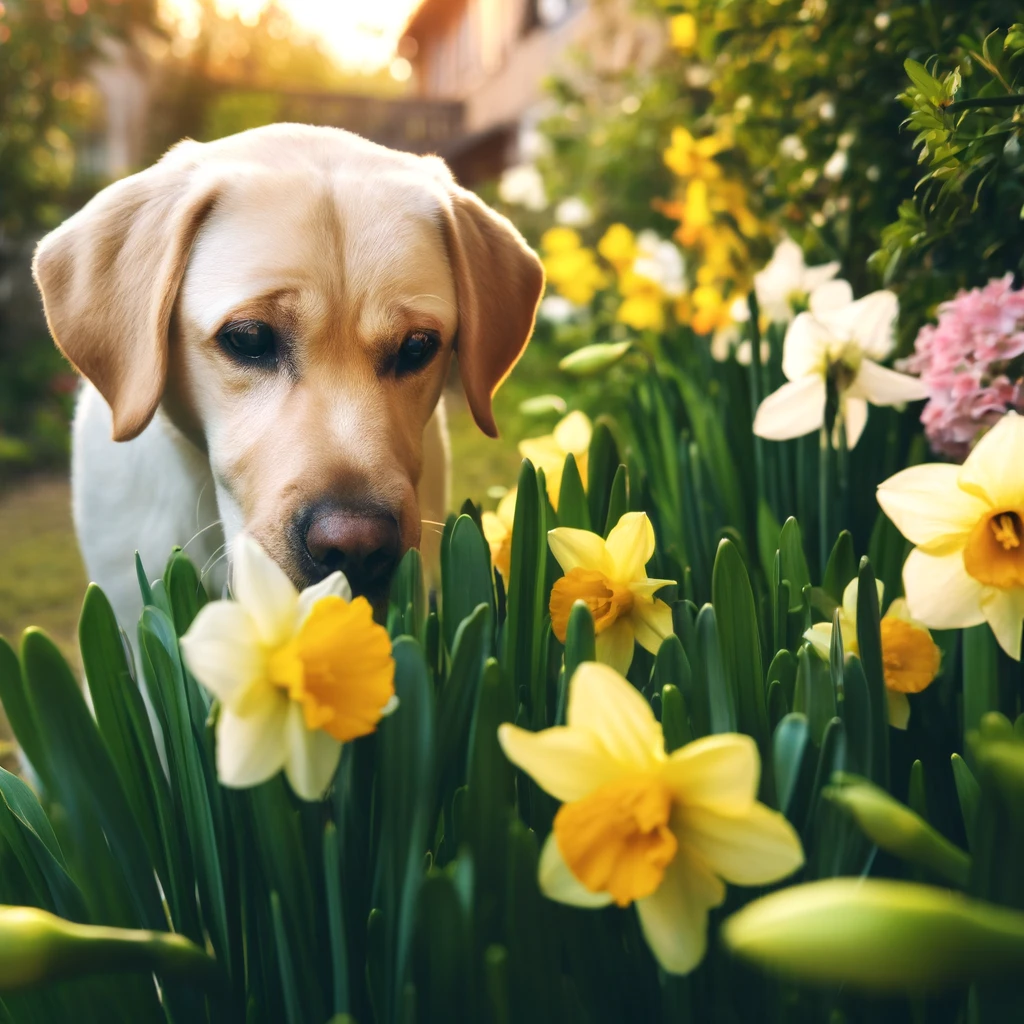
Conclusion:11 Dangerous Plants That Could Harm Your Labrador
Labrador owners, by staying informed about these dangerous plants, you can ensure your pet’s safety and well-being. Always monitor your pet’s environment and be proactive in preventing access to these harmful plants.
For more detailed information on plant toxicity and pet safety, visit reputable sites like the ASPCA’s Poisonous Plants list or Pet Poison Helpline. Stay safe and keep your furry friends healthy!
